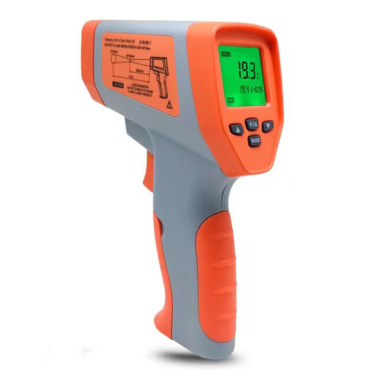How to Use an Oven Thermometer for Accurate Baking

本身,文章长度在1000字左右
# How to Use an Oven Thermometer for Accurate Baking
## Why an Oven Thermometer is Essential for Baking
Many home bakers assume their oven’s built-in thermostat is accurate, but this is often not the case. Studies show that up to 80% of home ovens have temperature variations of 25°F or more from their set temperature. This discrepancy can lead to undercooked centers, burnt edges, or uneven baking results.
An oven thermometer provides the only reliable way to know your oven’s true temperature. Unlike your oven’s digital display or dial, which shows what temperature you’ve set, an oven thermometer shows what temperature your oven actually reaches.
## Choosing the Right Oven Thermometer
Not all oven thermometers are created equal. Here’s what to look for:
– Analog vs. Digital: Analog thermometers are affordable and don’t require batteries, while digital models offer faster response times and often higher precision.
– Temperature range: Ensure it covers at least 100°F to 500°F (38°C to 260°C).
– Durability: Look for models with sturdy construction that can withstand oven temperatures.
– Readability: Clear markings and large numbers make for easier reading.
## Proper Placement in Your Oven
Where you place your oven thermometer significantly affects its readings:
– Middle rack placement: Position the thermometer in the center of the middle rack for the most representative reading.
– Avoid touching walls: Keep it at least 2 inches from any oven walls or the door.
– Multiple thermometers: For large ovens, consider using two thermometers to check for hot spots.
– Consistent position: Always place it in the same spot for consistent monitoring.
## Calibrating Your Oven with a Thermometer
Follow these steps to calibrate your oven:
– Place the thermometer in the center of the middle rack.
– Preheat your oven to 350°F (177°C) and wait until it indicates it’s reached temperature.
– Wait another 10 minutes, then check the thermometer reading.
– Note the difference between set temperature and actual temperature.
– Adjust your baking accordingly, or consult your oven manual for calibration instructions.
## Understanding Oven Temperature Fluctuations
All ovens cycle on and off to maintain temperature, but the range varies:
– Well-calibrated ovens: Typically fluctuate within ±10°F of the set temperature.
– Average ovens: May fluctuate ±25°F or more.
– Convection ovens: Generally maintain more consistent temperatures.
Your oven thermometer will help you understand your oven’s specific patterns.
## Baking Adjustments Based on Thermometer Readings
Once you know your oven’s true temperature, you can adjust:
– If your oven runs hot: Reduce the baking temperature in recipes by the average difference.
– If your oven runs cool: Increase the temperature accordingly.
– For inconsistent ovens: Rotate pans more frequently or use baking stones to even out heat.
## Maintenance and Care for Your Oven Thermometer
To ensure ongoing accuracy:
– Clean gently with a soft cloth – avoid harsh chemicals.
– Check calibration annually by testing in boiling water (should read 212°F/100°C at sea level).
– Replace if the needle sticks or the display becomes erratic.
– Store in a dry place when not in use.
Keyword: oven thermometer
## Advanced Tips for Serious Bakers
For those who want to take their baking to the next level:
– Create an oven temperature map by taking readings in different positions.
– Track how your oven performs at different temperatures (some are more accurate at certain ranges).
– Note how long your oven takes to recover temperature after opening the door.
– Consider a data-logging thermometer for complete temperature profiles.
## Common Mistakes to Avoid
Even with an oven thermometer, errors can occur:
– Reading the thermometer through the oven door (open the door briefly for an accurate reading).
– Placing it